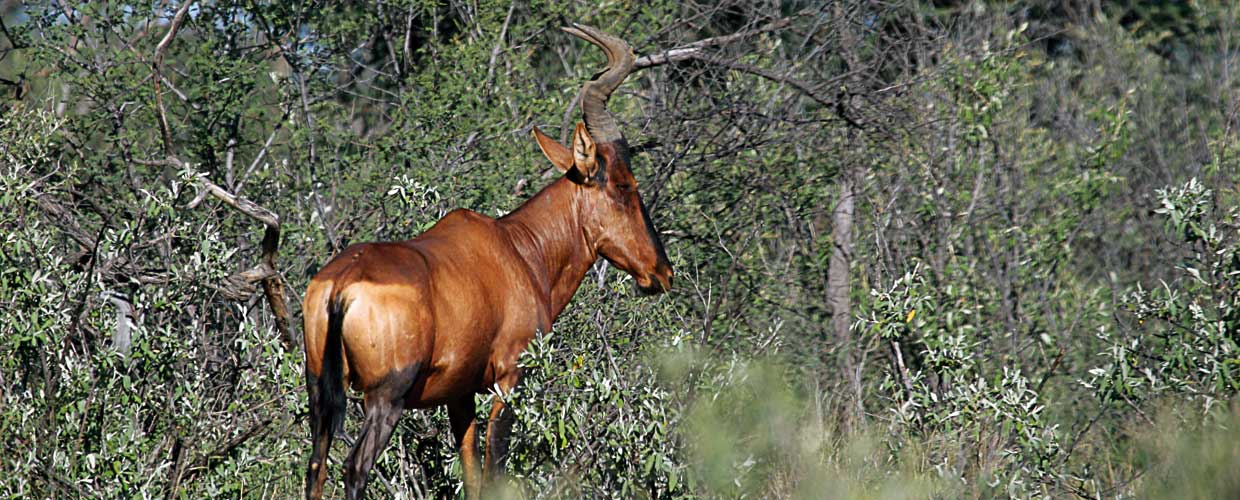
THE HARTEBEEST
The fleet-footed
Hartebeest mainly move around in herds of 15–30 animals. There is normally only one bull in the smaller herds, but several mature ones in bigger herds. In areas where the game density is high and the habitat ideal, such as the Seeis area, herds of more than a hundred animals can be found.
S ingle bulls are usually territorial, but they also form bachelor herds of 80–100 animals. Hartebeest prefer open grassland, interspersed with thorn bush thickets. In the heat of the day they rest amongst the bushes and moving out onto the plains to graze in late afternoon. Hartebeest are extremely fleet-footed, and have extraordinary stamina. Unlike other antelope, the newly born calves are not hidden for a few days after birth, because they are able to keep up with the herd soon.
The best time to stalk a hartebeest is in the early morning or late afternoon along the edge of the plain, using the cover of the thorn bush thicket. It is even worth following animals that are were spooked, especially solitary bulls, because they often stop behind a thorn bush to give a warning snort. Trophy animals are normally found in large or male herds. Lone bulls and those in small groups usually have attractive, worn-down, but thick horns. To shoot at the massive base of the neck of old bulls is very effective.
The horns of the bulls are clearly longer and thicker than those of the females, which look thin and straggly. Cows furthermore have thinner frames and almost look disproportionate with their large stomachs.
Old bulls have wide frames, are well proportioned and are usually dark chocolate brown. Young bulls are normally more reddish brown, with their forehead and face still brownish, instead of black like in old bulls. The tips of the horns turn inwards and their bases are light grey and flaky. The more curl the horns have and the further back the tips face, the bigger the trophy. When the tips of the horns are far apart, it is an indication of a good ‘swing’ and therefore a big trophy. The skull of a trophy animal should not appear long in relation to the trophy, but be in proportion.
HARTEBEEST
Alcelaphus buselaphus caama
| Shoulder Height: | 50″ |
| Weight: | Males: 250 – 400 lb | Females: 300 – 350 lb |
| Life expectancy: | 15 years |
| Food: | Grazers |
| Rutting season: | February – March |
| Gestation: | 8 months, one calf |
HARTEBEEST TRACK

